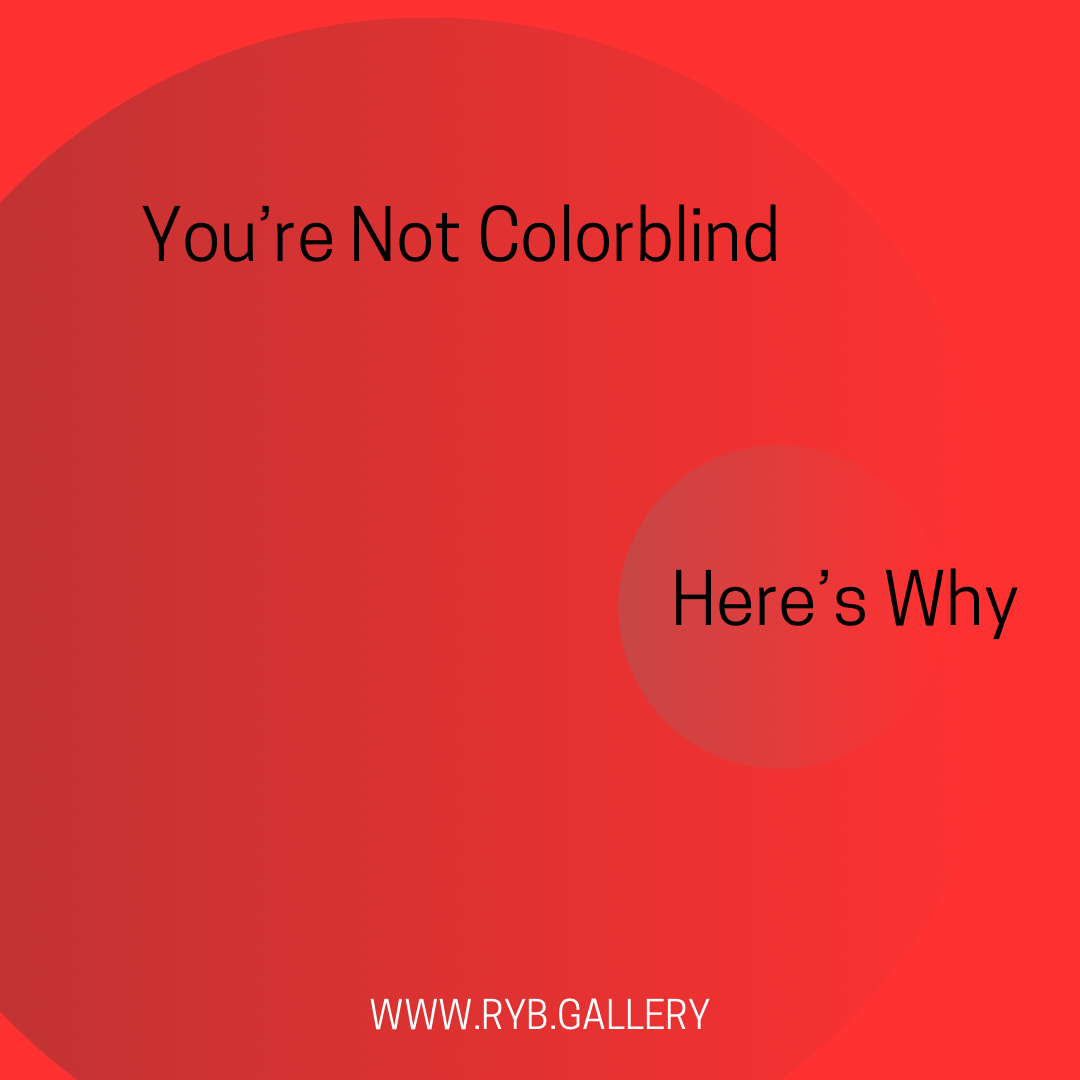You're Not Colorblind, Here's Why
Throughout all ten years of my color studies, people (understandably) approached it with skepticism because “what about the color blind?” and notions that “all of our perceptions of color are different.” If RYB Gallery’s mission is to make wellness immediately accessible and intentionally manipulated in our immediate environments, what about those who process color differently than the average eye? In 2021, 130 men participated in an experiment that compared color term and color patch associations between colorblind and non-colorblind individuals to find correlations between how both groups perceive hues.
Most colorblind participants associated yellow/blue with pleasure and orange with joy. Both groups associated red and pink with love, brown with disgust, and yellow with joy, but no specific color-emotion associations between the two groups differed. Ultimately, the results revealed that immediate color perception is unnecessary for color associations to be true. The varying tints, shades, and tones of hues are directly reflected in individual interpretations of the color spectrum, thus more specific associations from person to person.
What’s fire hydrant red to me, may be ketchup red to you, but when we’re discussing the hue, we both have a mutual understanding of its saturation and luminosity. Color (HEX) codes are where an even playground is established no matter your relationship with color perception.
“The results revealed that immediate color perception is not necessary for color associations to be true. ”
Conventional color associations are not uniform because humans are not machines, and the human eye is a lens with an iris that is custom to each person. There are millions of hues in the light spectrum, and culture nurtures how we subconsciously affiliate hues with emotions. If we can interpret hues differently, it’s important to note that branding, television programs, movies, music, general media, and shared experiences with them are the foundation of color perceptions/associations generally agreed upon. A person raised in a toxic home environment with yellow walls will not inherently receive all of the uplifting benefits of the hue that comes from social conditioning. In this case, a medium-saturated green brings balance to the trigger of yellow calling back to childhood trauma.
Although the basics of color perception can be agreed upon, a lack of studies specifying connections between our emotions and color outside of nurtured color association suggests that the human relationship with color is spiritual (or biological). In this study, scientists agree that “the lack of theory and carefully controlled experimentation makes clear conclusions about color associations and their implications elusive.” This led to a color test on the effects of red on a group of subjects, and they found that the color red is directly connected to an avoidant response (depending on the setting). While the facts of feelings about color association are strong, the environment plays an equal role; the setting makes a difference between a red signaling sensuality and that same red signaling danger.
“If we can interpret hues differently, it’s important to note that branding, television programs, movies, music, general media, and shared experiences with them are the foundation of color perceptions/associations generally agreed upon.”
While specific color studies are sparing, we can agree that color perception is not a determining factor for the effects of color psychology, and color association depends on culture, setting, and biology combined. So the next time you’re rejecting color psychology, remember, you’re not that special.
For more questions/information about color psychology and RYB Gallery services, visit our contact page.

